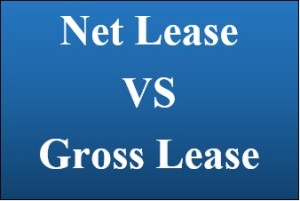 When starting the office space search, it is important to know if you are equally comparing lease rates. Many office tenants do not understand that there is a major difference between net lease and gross lease with how the rental rates and lease format is structured.
When starting the office space search, it is important to know if you are equally comparing lease rates. Many office tenants do not understand that there is a major difference between net lease and gross lease with how the rental rates and lease format is structured.
It can be very confusing trying to find office space on your own when office lease rates are advertised several different ways. Some landlords quote their rental rates as “Full Service Gross” or “FSG”. Others are shown at ‘Triple Net” or “NNN”. Sometimes there is just a rate shown with no specification on how it is structured.
The difference between net lease and gross lease can be simplified as follows:
- In a net lease, you have the base rental rate shown. Then you must add on the net amounts (NNN) which include your proportionate share of building taxes, operating expenses, and insurance. Utilities are often not included in the expense amount either. Any change in the NNN amounts from year-to-year will be passed directly onto the tenant. Sometimes it is possible to negotiate a cap on the controllable items of the operating expenses and you typically will have the right to audit these numbers if you think that something is incorrect.
- In a gross lease, the rental rate shown includes your base rental rate, proportionate share of building taxes, operating expenses, and insurance. Sometimes there are certain utilities that are included too, such as water or electricity. Phone and internet is most commonly an additional expense to the tenant as these needs vary greatly. Gross leases typically have a Base Year which the rental rate is based on. This is often for the year which the lease is signed. If the building expenses rise above the amounts accounted for in the designated Base Year, then any increase can be passed onto the tenant in the subsequent years of the lease. Some gross leases are structured with having absolutely no pass throughs to the tenant, these are not very common though.
As an example on how to calculate the difference between net lease and gross lease is given in the table below:
| Location | Size | Base Rate | NNN | Gross Rate | Annual Rent | Monthly Rent |
| Building A | 3,000 sf | $25/sf Gross | N/A | $25.00 | $75,000.00 | $6,250.00 |
| Building B | 3,000 sf | $17.75/sf NNN | $7.25 | $25.00 | $75,000.00 | $6,250.00 |
There is a common misconception that it is best to avoid net leases and that gross leases are much better. However in all reality, both end up costing the tenant approximately the same amount of money. Also as stated earlier, even most gross leases allow pass throughs to the tenant unless careful consideration is taken to reduce your exposure.
Unless you are a commercial real estate professional, it is in you best interest to have a knowledgeable Tenant Representative help you with your commercial lease negotiations. A Tenant Representative not only saves you time and money during the office leasing process, but they also grant the satisfaction of knowing that you avoided potentially costly mistakes when negotiating on the fine print lease terms.
For more information on the Tenant Representation Services that can streamline the leasing process for you, please contact us with questions.